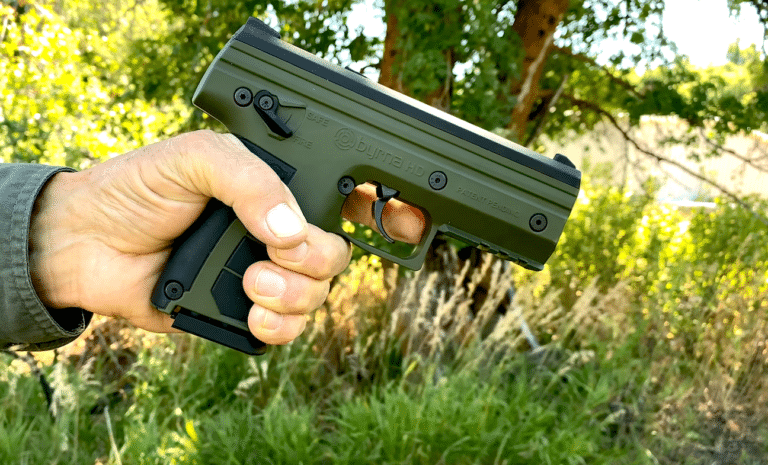Pepper pistols, also known as pepper guns, are a popular alternative to traditional handguns. They shoot non-lethal rounds filled with a pepper irritant, providing a self-defense option that does not involve lethal force. In this article, we will discuss the advantages of carrying a pepper pistol over a regular handgun.

Introduction
The decision to carry a self-defense weapon is a personal one that requires careful consideration of various factors, including the level of threat in your environment, your comfort level with firearms, and the legal implications of using lethal force. While traditional handguns have long been the most popular option for personal protection, pepper pistols offer a unique set of advantages that make them a compelling choice for many individuals.
What is a Pepper Pistol?
Pepper guns are a type of non-lethal self-defense weapon that uses compressed air or CO2 to fire small balls filled with pepper dust. These rounds burst upon impact, creating a cloud of pepper dust that can incapacitate an attacker without causing permanent harm. Pepper pistols come in a variety of styles, including handguns and rifles, and are often used by law enforcement and military personnel as well as civilians.
Advantages of Carrying a Pepper Pistol
Less-Lethal Force
Perhaps the most significant advantage of carrying a pepper pistol is that it provides a non-lethal option for self-defense. While traditional handguns are designed to cause permanent harm or death, pepper pistols allow you to incapacitate an attacker without causing long-term damage. This makes them an ideal choice for individuals who are uncomfortable with the idea of using lethal force, or who want to minimize the risk of accidental injury or death.
Legal Considerations
In addition to the moral and ethical implications of using lethal force, there are also legal considerations to take into account. In many jurisdictions, the use of lethal force is only justified in cases of imminent danger, and even then, the burden of proof falls on the individual using the weapon. Pepper pistols, on the other hand, are often seen as a less aggressive option that can be used in a wider range of situations without fear of legal repercussions.
Wide Range of Use
Pepper pistols can be used in a variety of situations, from self-defense to crowd control to animal control. They are particularly effective in situations where you need to incapacitate an attacker without causing permanent harm, such as in cases of domestic violence or home invasions. Because they are non-lethal, pepper pistols can also be used in situations where traditional handguns would be inappropriate, such as in areas with high population density or where firearms are prohibited.
Easier to Aim and Shoot
Pepper pistols are often easier to aim and shoot than traditional handguns, particularly for individuals who have limited experience with firearms. This is because they have less recoil and are generally lighter and more compact, making them easier to hold steady and control. Many pepper pistols also come with features like laser sights or red dot sights that make aiming even easier.
Less Recoil
Finally, pepper pistols have less recoil than traditional handguns, making them easier to shoot accurately and reducing the risk of injury or strain. This is particularly important for individuals who may have physical limitations or who are new to using firearms. With less recoil, the pepper pistol can be fired more easily and accurately, allowing for better aim and a higher chance of incapacitating an attacker.
Comparison with Regular Handguns
While pepper pistols offer a unique set of advantages, it is important to compare them to traditional handguns to determine which is the best option for your personal protection.
Lethal Force
The most significant difference between a pepper pistol and a traditional handgun is the level of force that each can provide. Traditional handguns are designed to cause permanent harm or death, making them a powerful tool in situations where lethal force is necessary. Pepper pistols, on the other hand, are non-lethal and are designed to incapacitate an attacker without causing permanent harm.
Legal Considerations
The use of lethal force is heavily regulated in most jurisdictions, and the legal implications of using a firearm can be significant. In many cases, the use of lethal force is only justified in situations where an individual is facing imminent danger. Pepper pistols, however, are often seen as a less aggressive option that can be used in a wider range of situations without fear of legal repercussions.
Limited Use
Traditional handguns are designed for use in situations where lethal force is necessary, such as in cases of home invasions or assaults. Pepper pistols, on the other hand, are better suited for situations where you need to incapacitate an attacker without causing permanent harm, such as in cases of domestic violence or animal control.
Harder to Aim and Shoot
Traditional handguns are often more difficult to aim and shoot than pepper pistols, particularly for individuals who have limited experience with firearms. This is because they have more recoil and are generally heavier and more difficult to control. Additionally, traditional handguns often require more training and practice to use effectively.
More Recoil
Finally, traditional handguns have more recoil than pepper pistols, which can make them more difficult to shoot accurately and can cause injury or strain. This is particularly important for individuals who may have physical limitations or who are new to using firearms.
Conclusion
Pepper pistols offer a unique set of advantages over traditional handguns, including non-lethal force, wider range of use, and easier aiming and shooting. While traditional handguns may be more powerful, they also come with significant legal and ethical considerations. Ultimately, the decision of which self-defense weapon to carry is a personal one that should take into account a range of factors, including your level of experience, the level of threat in your environment, and your comfort level with using firearms.




